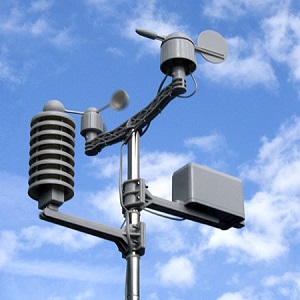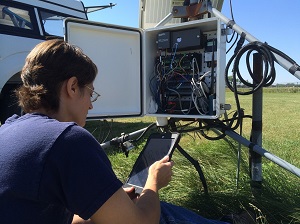 A weather station is usually required for getting information on the current weather situations of a particular location or in forecasting the future weather conditions. It is vital for the weather station to be appropriate to provide the exact circumstances. A good weather station provides you with the most accurate data and forecast.
A weather station is usually required for getting information on the current weather situations of a particular location or in forecasting the future weather conditions. It is vital for the weather station to be appropriate to provide the exact circumstances. A good weather station provides you with the most accurate data and forecast.
If the weather station is not right and cannot provide correct data, then having such a unit is useless. It is essential for the buyer to know the various factors and features that most of the excellent weather stations have, to find the right and most appropriate unit. Here we will provide you some of the best factors that determine a good weather station and also a few mistakes committed by others while purchasing a weather station, which must be kept in mind as lessons.
Almost accurate
The most critical factor that determines a good weather station is its accuracy. It should provide the most accurate data reports of the current weather conditions and also it should be capable of producing an accurate weather forecast. Many low-quality weather stations are not even near to accuracy, and the estimates hardly match. The estimates of a good weather station are always accurate and real.
Include various types of sensors
Sensors are the most important units in a weather station. All the standard weather stations have three sensors fitted in it, which includes a thermometer, hygrometer, and anemometer. Along with these sensors, the advanced and good weather station will have more sensor units such as barometer, rain gauge and much more. A good weather station is always able to transmit data about most of the weather elements like temperature, humidity, wind direction, wind speed, rainfall, barometric pressure and some other conditions like soil wetness, heat index, etc. it must be able to provide a maximum number of reports.
Wide transmission range
Most of the weather station users install their instrument at rooftop or backyard, which makes the unit quite far from the console in which the readings are to be transmitted and displayed. With the walls and other obstacles, the difference is increased even more. The transmission distance should be full enough for the data to be transmitted quickly even throughout the external constraints. A good weather station must have a very high transmission distance so that even if the weather station unit is placed at a distant zone or there are more significant obstacles, the data can quickly reach the console.
High elevation friendly
Many users require their weather station to be set up in mountain or hilly areas. There are those low featured weather stations that cannot be mounted on hilly areas as these are unable to transmit data at the high-pressure zone. There is also some high quality featured weather stations that can be installed even at higher elevations and they are easily able to transmit readings without affecting the accuracy. A good weather station should be compatible with any height and even at higher elevations.
Fast transmission and updating speed
The accuracy of data depends on the rate of the readings being transmitted and updated. For example, if a weather station can update a weather report every 3 minutes, the data might be 3 minutes older, and weather conditions can change in a matter of seconds. With a faster speed of data updating, the user can get more recent and current conditions rather than the older ones. So, a good weather station must be able to provide reports more often and fast.
Organized forecast and reading display
A weather station that displays unorganized reports can be a mess for any user. It is imperative to have data in an organized manner so that the user can understand the details quickly and also the past weather variable data should be stored in the unit properly for future use and analysis. A messed up report is of no use. A good weather station should display the data and readings clearly in a proper manner so that even beginners and unprofessional can understand it.
Shielded outdoor sensors
As sensors are the basic units of a weather station, these are also the most exposed units. The sensors are installed outdoors and are exposed to weather variables like heat and UV rays, which can profoundly affect the accuracy of the unit. Too much of heat can warm up the sensors and make them transmit false heat or temperature readings. If the sensors are correctly shielded with proper ventilation, then this type of issue is never encountered. The right weather station will have its fragile detectors shielded in UV or heat protective shields. Some high-quality weather stations also have aspirated fans in the sensor housing to keep the sensors at average temperature and condition.
Strong construction and weather-proof
Almost all the weather station sensor units are placed outdoors. Outdoor installation means exposure to various weather elements like heat, rain, wind, and ice, which can very efficiently affect the external construction of the weather station units. A good weather station must have a solid and sturdy construction that can bear and withstand the harshest climatic conditions and last longer than expected and promised time duration. Some weather station anemometers are not ice-proof and would not run if the weather is freezing. No matter whatever the condition might be, the functionality of the units of a good weather station is never hampered.
Comes with various additional features
Including the multiple inclusive weather variable reports, there are also many more extra features that a high-quality weather station comes. The features include date and time display, moon phase, sunset and sunrise display, computer interface, data logger feature, UV or solar radiation reading, many warning tones and alerts for snowfall, rainfall, flood, and storm. These features might not be as important, but a good weather station must also be able to entertain the user.
Easy installation and use
Weather stations come with various equipment that needs to be mounted together and installed. Installing some weather stations can be very difficult due to the complicated construction of the assets to be assembled, especially if the instrument is cabled. However, some high-quality weather stations have been designed automatic and ready to install out of the box. A good weather station must be user conveniently easy to install and use, with the readable console having easy to understand keypads and buttons.
Few Mistakes Committed by Buyers
Many times, people regret buying a particular weather station; here are some of the most common mistakes committed by the buyers while purchasing a weather station;
- Incompatible unit: Some weather stations are not compatible with a few climatic conditions. For example, there are few weather station brands whose products are not usable at Arctic Circle, where the temperature is freezing. It’s no use buying a unit that won’t work at all. We recommend you purchase the type of weather station which is compatible with your residential location.
- Unnecessary data display: Many data means great confusion and complication. In case you will require reports of only a few weather variables, then it’s better to go for a weather station that displays just the desired reports and readings. For example, If you don’t need data for soil moisture or leaf wetness, then you don’t have to buy a weather station that transmits these readings. You must only go for that unit which will fulfill your requirements.
- Unwanted features: As high-quality weather stations come with many additional features as mentioned above, it is not always necessary for you to require those elements. For example, if you are not going to use the PC interface feature then it is no use of purchasing a weather station with this feature, as this would only make the device complicated to use. Many buyers regret buying a weather station with unwanted features.
- Wrong sensor housing: Sensor housing comes in different shapes and size, and is mostly regretted by weather station buyers. You should make sure that the sensor housing is of the right size and allows proper ventilation. Less air-flow will cause the sensor even more warm and abnormal. Before buying a weather station, make sure the housing is appropriate.
- Wireless and low signaled: Though wireless weather stations are easier to install and less messy as there won’t be any tangling issue while mounting the instrument, the wireless units are more likely to lose signal often and vulnerable to obstructions. In case there is expected to be more obstacles and signal miss outs, it is best to go for a cabled unit, as cables are likely to carry transmission better with a minor hassle.
- Paying too much: High-quality weather station has advanced and numerous features, which makes the unit more costly. If you require a weather station only to keep updated with weather conditions and you don’t need many features, paying for a more advanced instrument will merely be a waste of money. Go for a high-quality weather station only if you are an enthusiast or professional and if you need those features and you are likely to use your device most frequently.
Conclusion
Weather stations are delicate instruments and a little mistake done by you in selection can make you regret for a lifetime. Always look for the useful features in the weather station and select according to your requirements. Never buy something that you don’t need, as this will only cost you extra bucks unnecessarily. It is better to take time and think now than making a rush and feeling pathetic later.

Nice stuff!I’m wondering if the WAIT block is slitcrty time based, or if you can wait for an event to occur (such as a sensor hitting a threshhold value or a variable reaching a certain count)? Heck, while we’re at it, what are all those symbols on the left besides FLOW?I’m also starting to wonder how robust (if at all) the support for subroutines is…For example, it might be useful to create a ‘sound off’ subroutine which can either play a success (if ‘true’ is passed in) or a fail (if ‘false’ is passed in) tune that could then be reused as needed. “MyBlocks” was an attempt to do that under the RCX, but was limited to a single level, didn’t permit recursion and otherwise was just really a space saving mechanism on the programming workbench.I’m also starting to wonder if concurrent tasking is possible!You’re getting me really excited about this product… May and June are going to be long months!